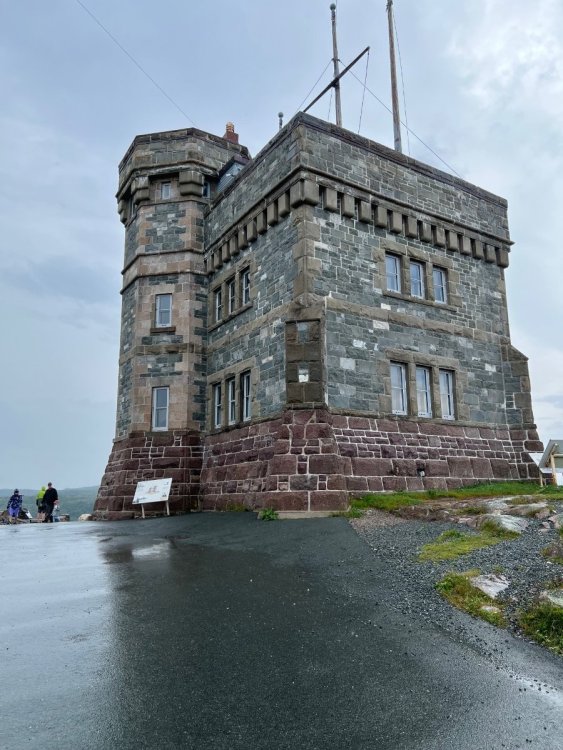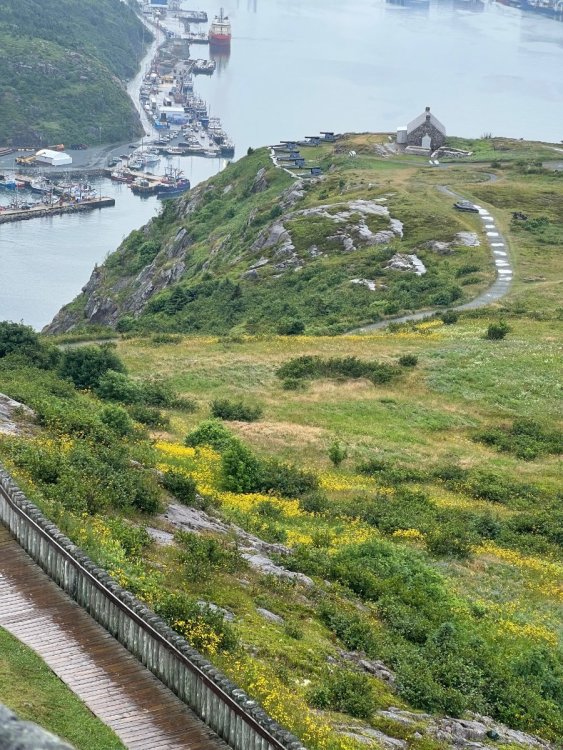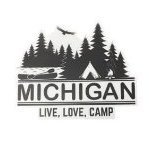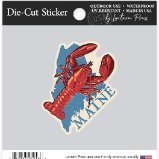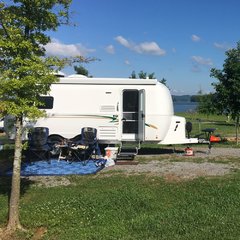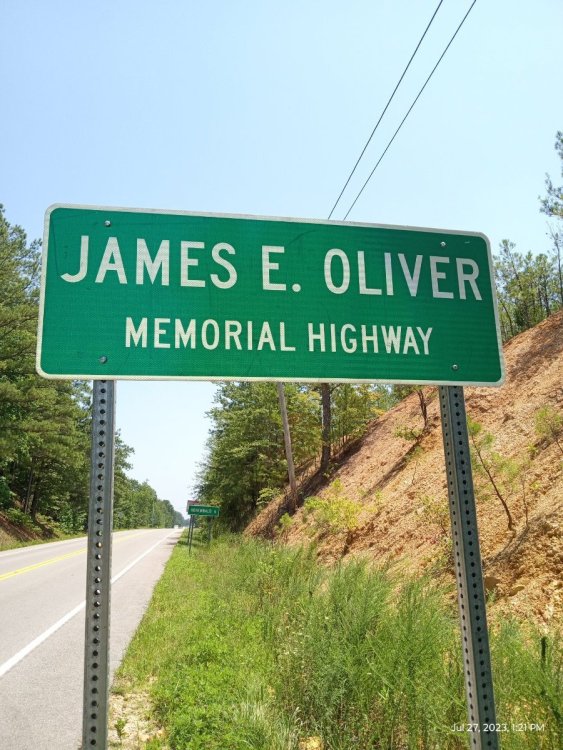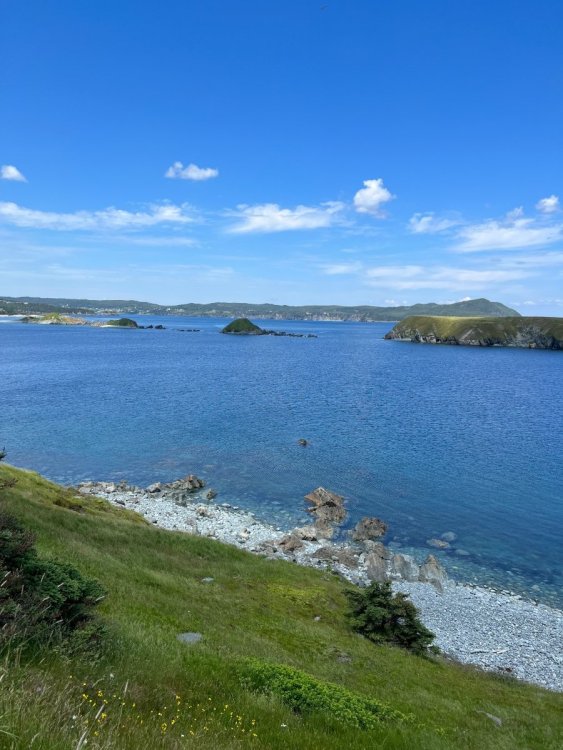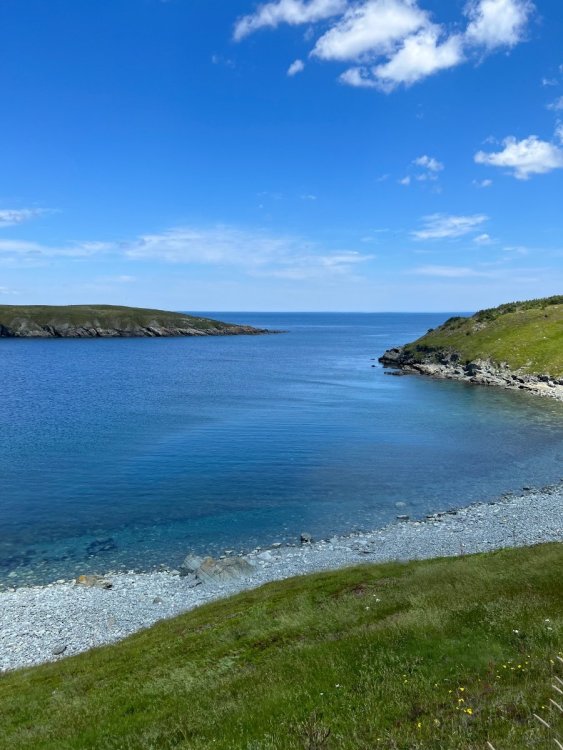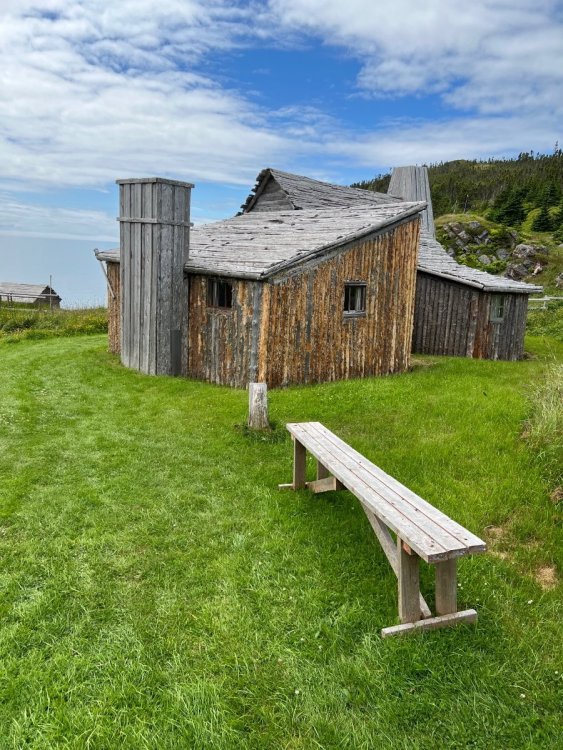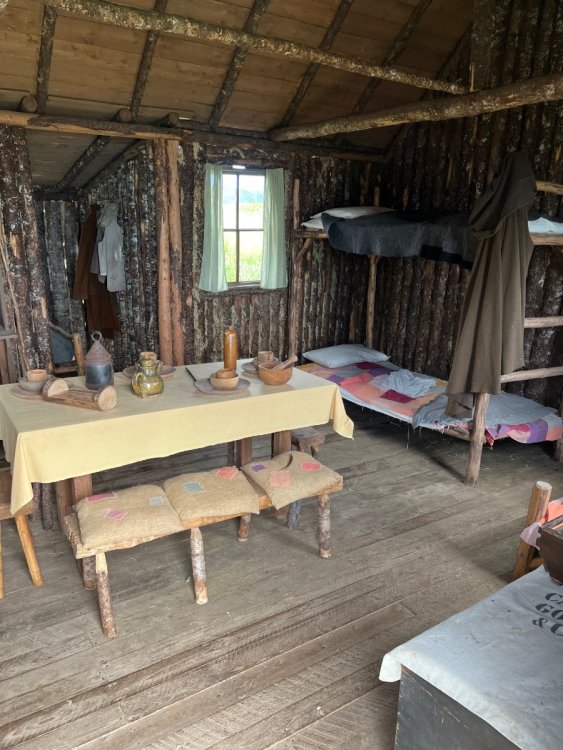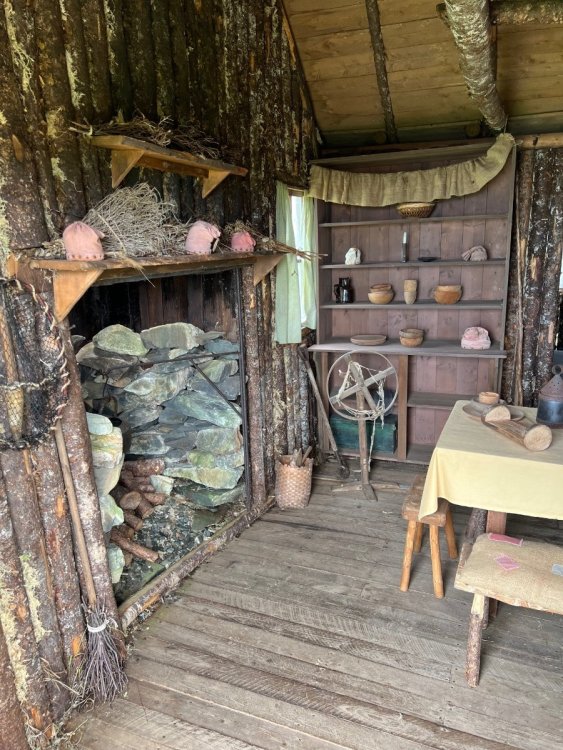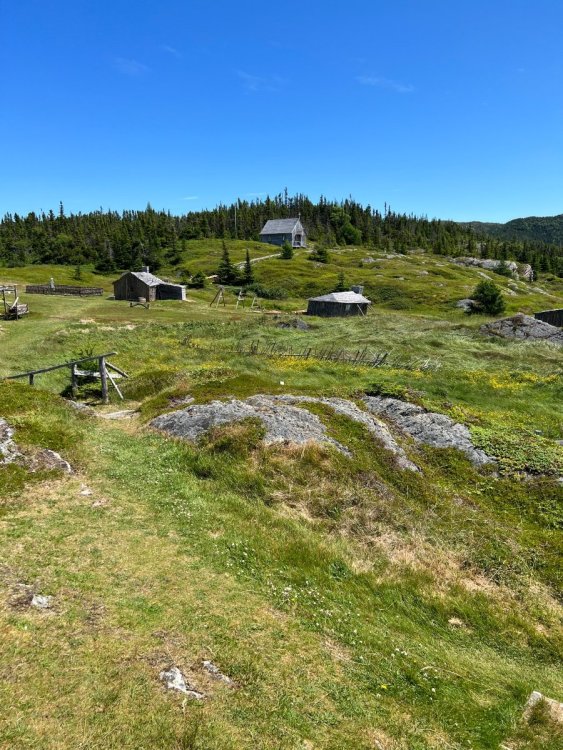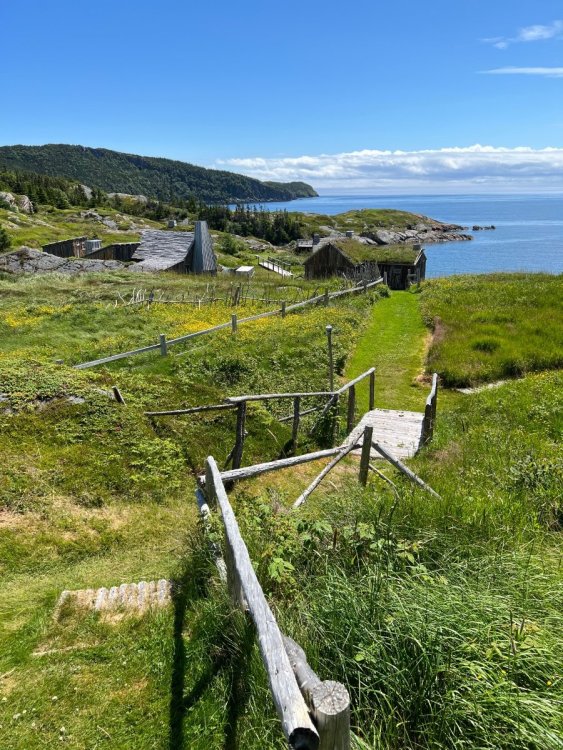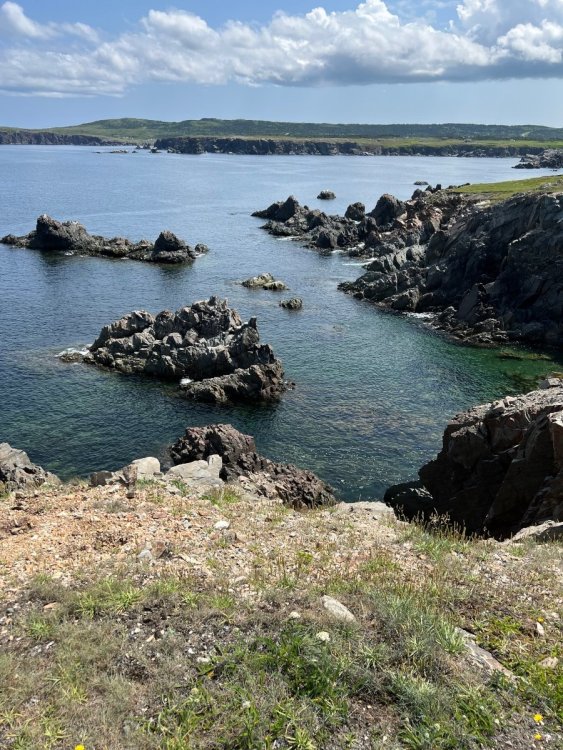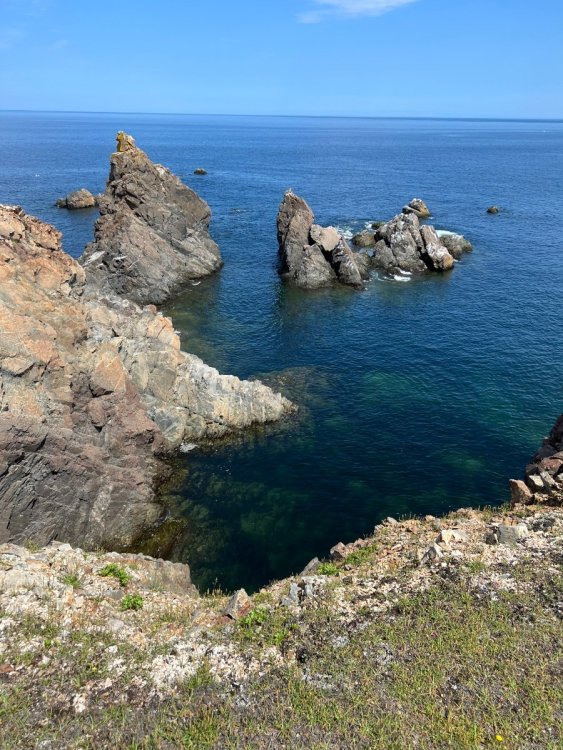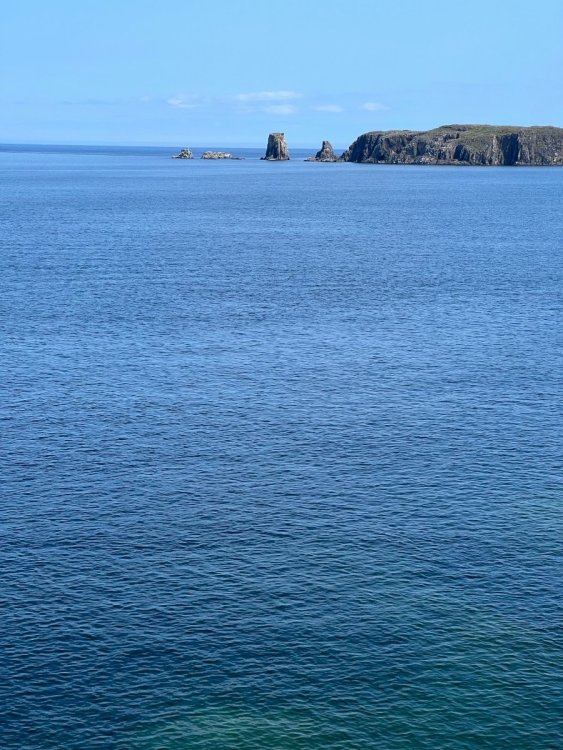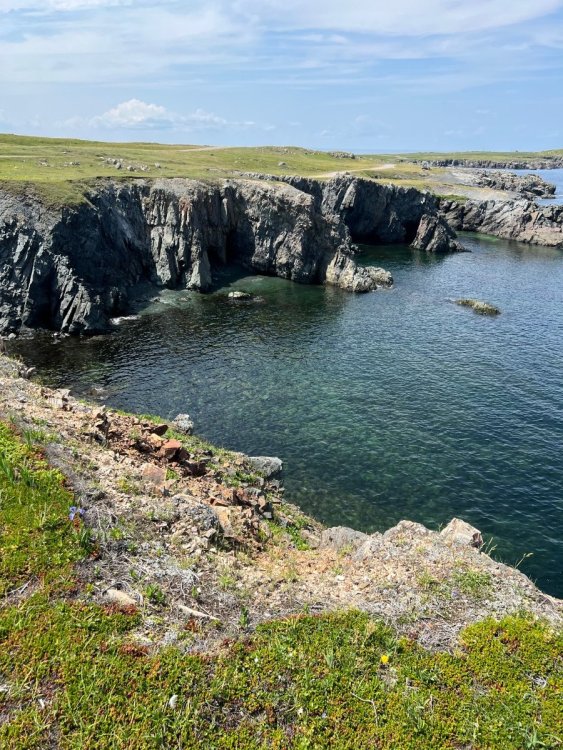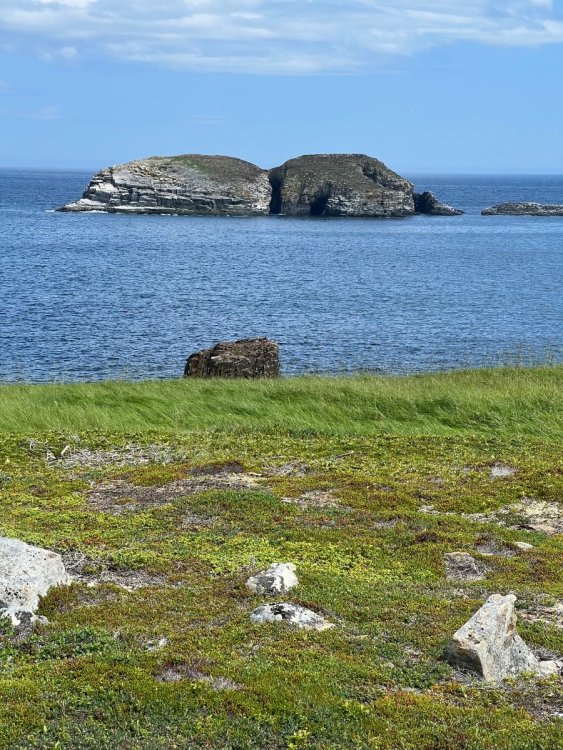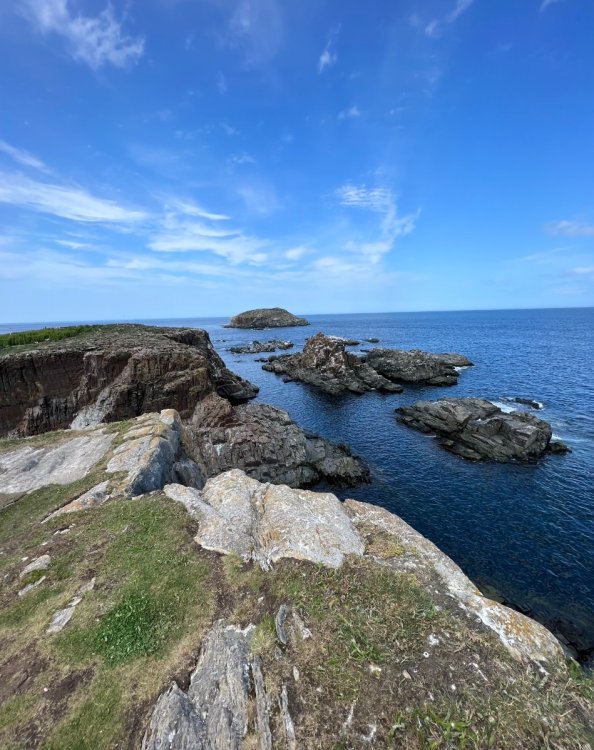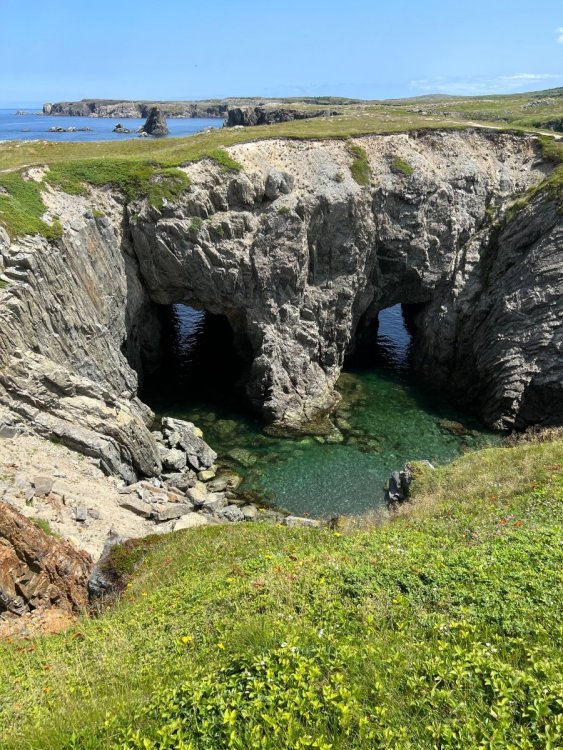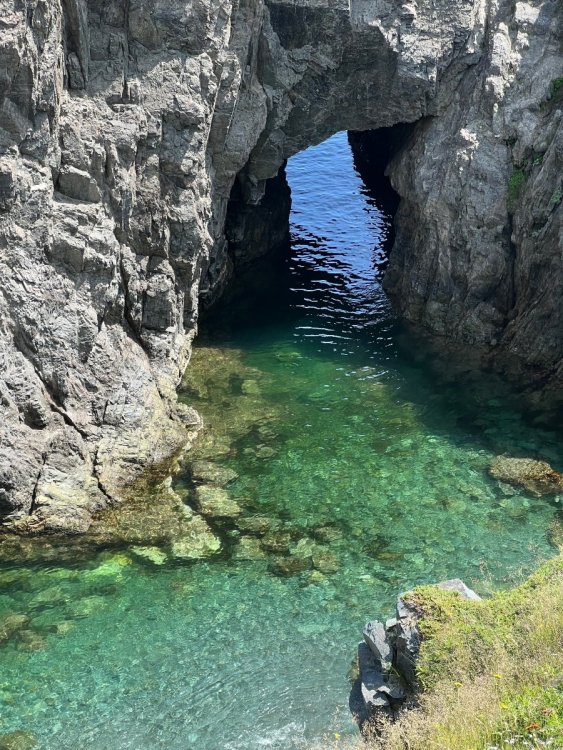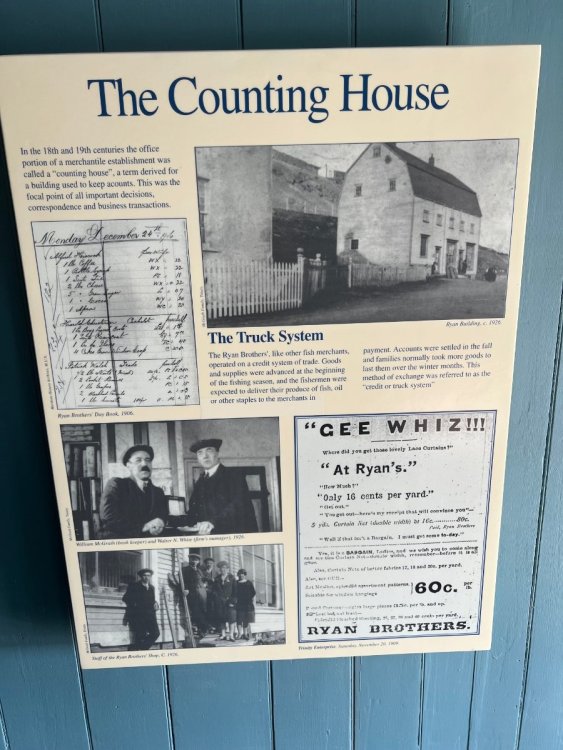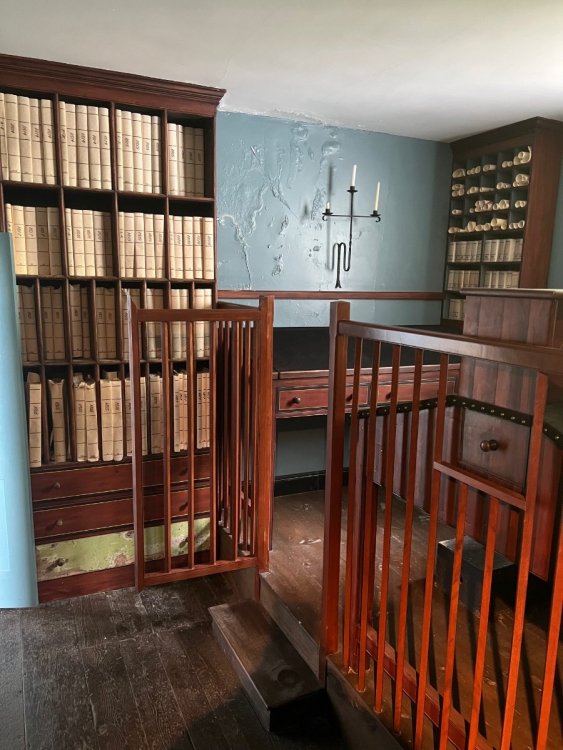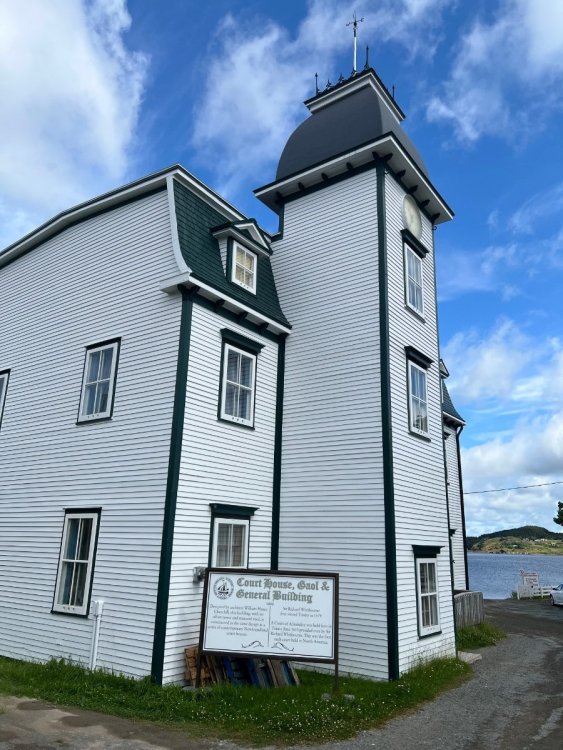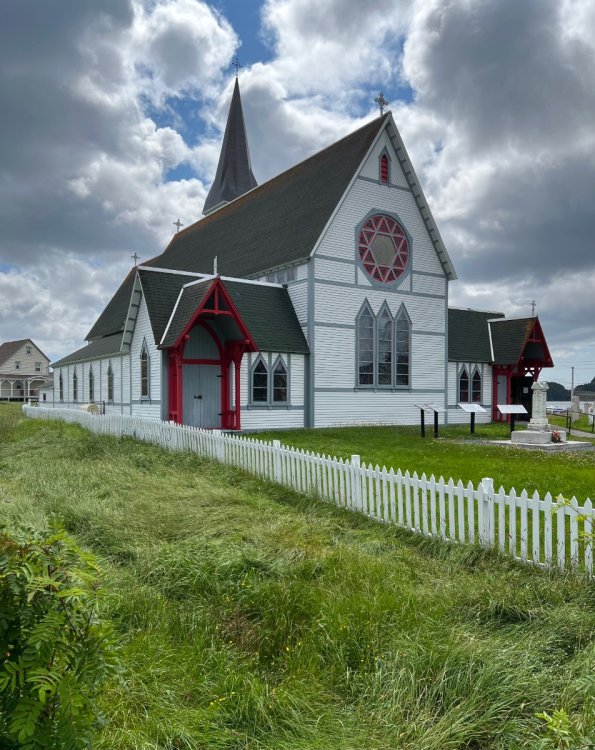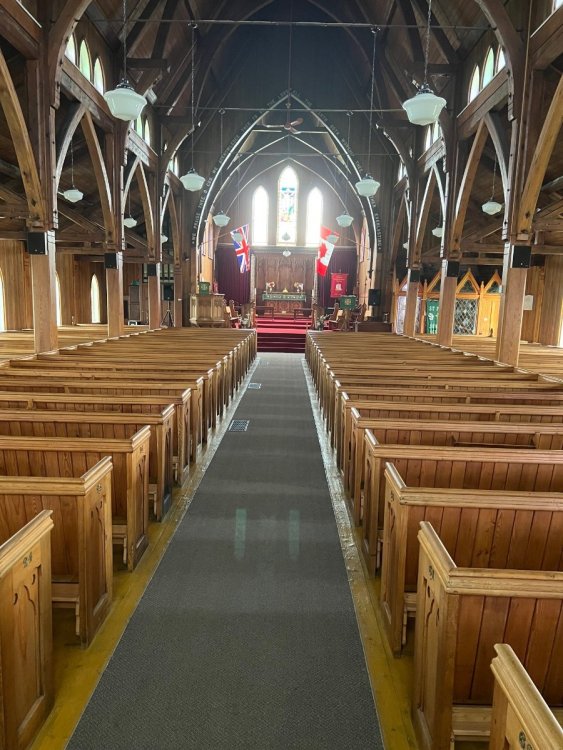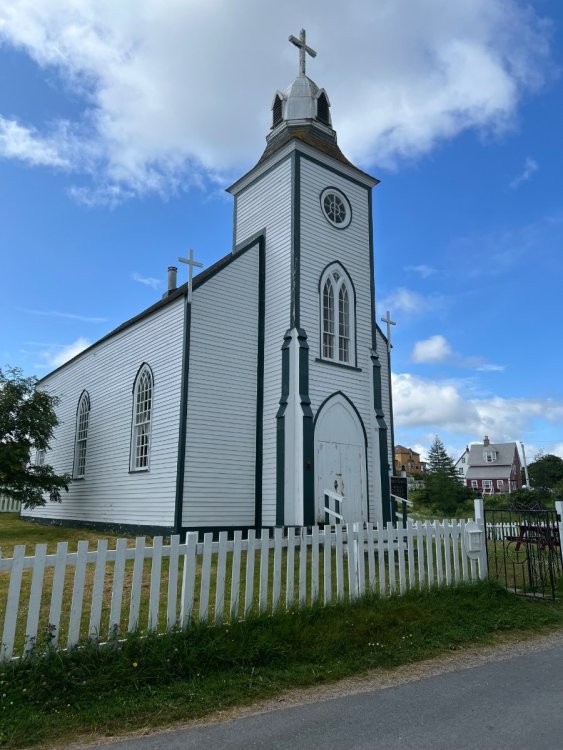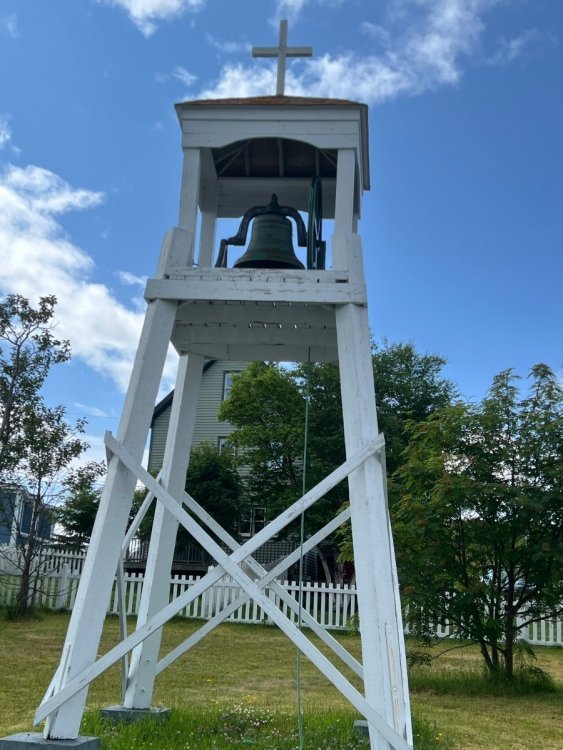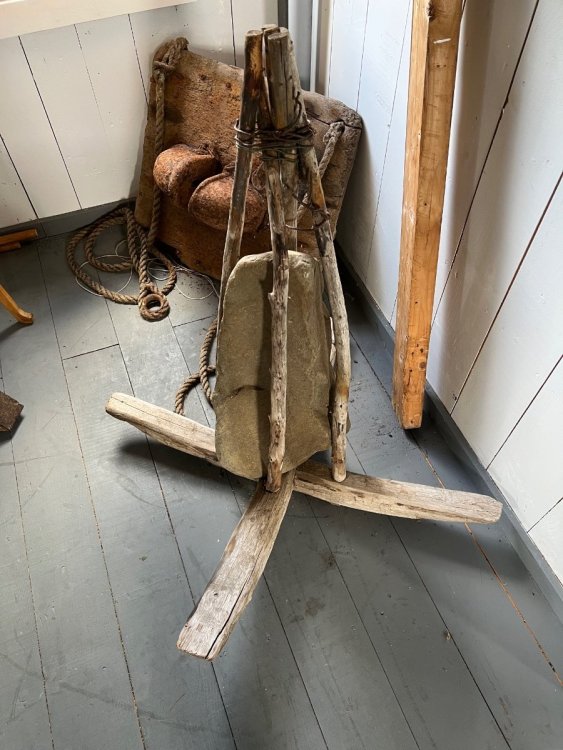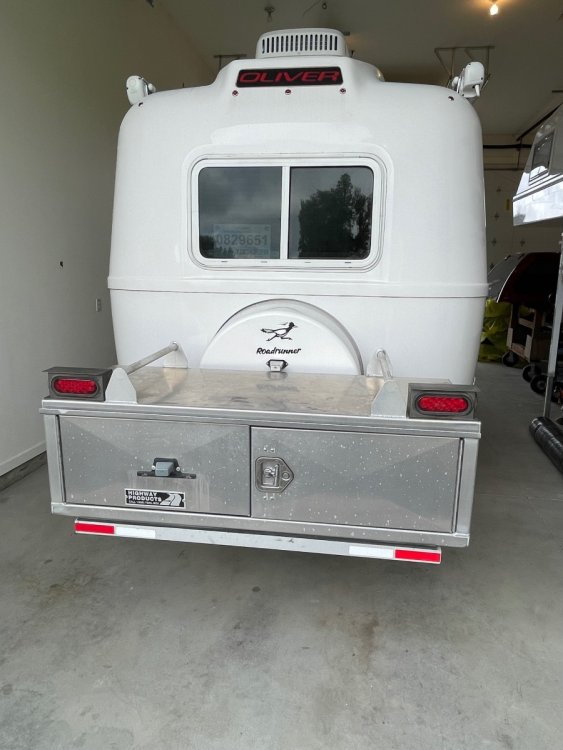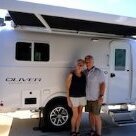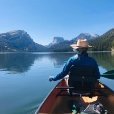Leaderboard
Popular Content
Showing content with the highest reputation on 07/30/2023 in all areas
-
How are y’all doing? We are a couple from IL. Never owned a travel trailer. We are considering an Ollie. We want to travel the country. See National Parks, beaches, forests, deserts, etc. we are looking for input on what you did right. What you would have done differently. We are close to retiring. Couple years out. Plan on going to a factory visit next year. TIA. We appreciate all the advice. D & S2 points
-
We are leaving Newfoundland in a couple days. We will have been here for 55 days. You could see two or three areas of Newfoundland in 2 weeks such as Gros Morne, Twillingate area and Bonavista peninsula. I would recommend more time if you can do it. Lots of different factors would determine how much time you need, like what you enjoy doing and seeing, how much driving you want to do each day and how much of Newfoundland you want to see.2 points
-
I just covered the leading edge of each front corner from the doghouse to just around the corner to the side and only below the belly band. From my experience, this is where I have found most of the rocks escaping my rock tamers and hitting whatever I tow. Did not cover the doghouse and have had no rock hits as of yet after two years of towing. I am not with my trailer currently but will try and remember to take pics and circle back and update my reply here in a couple weeks.2 points
-
The touch lights are made in China 👎🏻 (shocker) and are simply cheap junk. If you get a year or season out of them you are winning. I learned from Jason at Oliver Service they are moving away from TL in 2024 YM to a higher quality switched light. Unfortunately I also learned from service that the new and improved lights cannot be retrofit into the existing holes in the fiberglass on prior year model Olivers due to a small diameter difference. 😏 I carry a few extras just incase one goes out. All this said, the lights I have replaced have continued to work fine. Patriot🇺🇸2 points
-
2 points
-
2 points
-
I covered both front corners with 3M Clearbra, from the belly band on down, for less than $50 DIY (including the purchase of two plastic squeegees and spray bottles for both the soapy slip and alcohol grip mixtures). Mine is a foot wide. Simple and easy to install if you take your time. No rock issues have reached the gelcoat yet.2 points
-
The right thing we did was to buy an Oliver. In fact, we've bought two of them. Any other brand would have turned out to be a disappointment. The thing I would have done differently would have been to buy the correct tow vehicle in the beginning instead of going thru five different ones to finally get to where I needed to be all along. You can see the particulars in my signature. As @Frank C stated above "...just be prepared with the checkbook. It ain’t a cheap hobby... Good Luck2 points
-
We went down the same road starting three years ago. Made two trips to the factory to solidify our decision to buy and Oliver. We compared everything else and kept coming back to the Oliver. Generally speaking vehicle purchases are not investments, they are costly until the day you sell them. With that said, you won't make a better overall "investment" than you will with an Oliver. Both in monetary terms and in terms of what you will gain while using your Oliver. And when the time comes to part ways, you will retain considerable value to recover. It's already been stated but I will reiterate the importance of your choice of tow vehicle. I know trucks are getting crazy expensive, but having plenty of truck will make your experience much more relaxing and enjoyable. Many folks try to get by with the minimum and eventually end up upgrading the tow vehicle after a season or two. I personally would not tow my LE2 with less than a 3/4 ton truck with a full tow package. I would recommend getting any upgrades you can afford. With the extensiveness of the travels you have described, you will definitely want the larger Lithium solar package. It's a game changer for boondocking and off grid camping at length. The reason I say this is because folks that have opted for fewer options have discovered it's much more costly to retrofit these systems once the camper is built. Anything is possible but leaving the factory with a fully capable all purpose, all season camper is the best way to go. As mentioned earlier, go in eyes wide open, delivery day is when you pay the big money, but there are many significant expenses to follow for a few weeks after you bring the camper home. I'm delighted we made the decision and I'm also very glad we had a well laid out plan for covering the overall true costs involved. Good luck with your plan and try to move the schedule up any chance you get.2 points
-
Hello and welcome to the forum. My advice, don’t overthink it, I researched for a year before we bought our first camper a few years ago then sold that for our Oliver. I learned so much more hands on then studying and researching all things campers like I was going for my PhD! I’m not saying don’t do your research, just know you will indeed learn as you go. I absolutely agree with the others, rent a camper first to get a feel for camping, see if you like it. Wishing you the best.2 points
-
Welcome to the Forum. I agree with the above posts. You are smart going to the Oliver factory to see for yourself the quality of materials and workmanship that goes into manufacturing a Olliver. Here on the forum under Owner Resources, is a section call Oliver University. Check out all the information and videos in that section and you will start to get a feel for the Oliver Travel Trailer and what it takes to use the trailer. Good Luck. If you find you like camping, then you will appreciate the Oliver TT.2 points
-
Well, we've owned two boats, at least, entire time we've owned the Ollie. Our (now vintage, 40+ year old) cruising sailboat, and a ski boat, plus various others.) The Ollie is the least work, and least expense, of any of our big "adventure toys ". (Except dinghies and Sunfish, but I wouldn't count them. Not in the same class.) We do find it true that any vehicle, even a trailer without engine, requires periodic maintenance. If you take care of your gear, it takes care of you. One of those symbiotic relationships. Our tow vehicles are 2005, and 2008. Same holds true. Take care of your truck, and it takes care of you. The payback vs memories? IMO, priceless.2 points
-
Hi and welcome to the forum. As far as advice on trailer camping and retirement in general: 1. Don’t push retirement out too far. I received great advice years ago to “retire as early as financially possible”. And we followed that advice. We’ve know too many friends and relatives who kept putting off retirement for various reasons, and then ended up with health issues, or passing away, that cut short their time to enjoy retirement. There are too many stories like that even here on this forum, and trailers for sale in the classifieds section due to health issues encountered after the trailer purchase. Thankfully we’ve been able to enjoy our time with the Oliver, and have covered a good bit of the continental US at this point, and plan to continue. 2. If you’ve never owned a trailer (or any camping experience?), I agree with the above advice to try renting one and traveling with it first before committing to a big purchase like the Oliver and the necessary tow vehicle. The reality of “traveling the open road and seeing the country” can be a shock to some people compared to their dream. We’ve seen a few folks buy an Oliver, then encounter the reality of camping, trailering headaches, etc. and sell the trailer shortly afterwards. 3. Don’t skimp on a tow vehicle. Get one with more than adequate payload and towing ratings. Most folks consider a 1/2 ton pickup to be the true safe minimum to start with for an Oliver Elite II. 4. Be prepared for all the expenses that come after the trailer purchase (after you get over the initial shock of the Oliver price itself with all the factory options you add). After purchase expenses for the trailer and tow vehicle typically include the following: -Sales tax (6% of the purchase price here in Pennsylvania for us at time of title registration after purchase). -insurance -a trailer cover (the Calmark cover Oliver sells is $1,300) -tire covers for storage. -water filtration system, hoses, fittings, etc. -tire pressure monitoring system -hitch lock -tow vehicle mud flaps such as Rock Tamers -bed cover for the truck -jack blocks -wheel chocks -leveling blocks -extra sewer hose -portable waste water tote tank (for campsites that aren’t full hookup). -portable generator (for boondocking) -misc campsite accessories (chairs, rug, clam shelter, portable grille, awning shade screen, etc) -a good portable tool kit -trailer storage fees -trailer annual maintenance, etc. -repairs! Things do break since RV industry standard components in general aren’t the greatest for durability or reliability. -Harvest Host membership -campground per night fees (cheaper than a hotel but still not free) The list goes on and on, and it really adds up. You can expect another $10,000 to $15,000 in expenses for the above items after the initial Oliver purchase price. Not trying to scare you 🙂, just be prepared with the checkbook. It ain’t a cheap hobby. It reminds me of the boat owners I know who say that BOAT is an acronym for Bust Out Another Thousand 🙂.2 points
-
Hi. Have you considered renting a trailer or RV and trying the lifestyle before you commit to a purchase? There are commercial rental companies, campgrounds with trailers set up on site, and AirBNB type RV rentals from owners. There's a lot to be said for the lifestyle, but it's not always as easy, fun, and carefree as some YouTubers would have you believe. Expect to be fixing things yourself and having to be flexible with your planned destinations. Once you've decided to press forward, make sure your tow vehicle is up to the job. Lots of posts about that here. Finally, and admittedly conversely, make the jump when you are ready. We were also a couple years shy of retirement when we put the deposit our Ollie. The week we brought it home my wife got a cancer diagnosis, so we're glad we moved when we did. (She's doing well on treatment now.) In the end you have to do what feels right for you. This forum is certainly a great place to start.2 points
-
Hi, and welcome! You'll see lots of info if you just poke around. If you have the means, and some decent vacation time accrued, getting to know travel trailers in general, and Oliver in particular, can be a learning experience. It's not hard, but best learned before you launch off on "the trip of a lifetime, " unfamiliar with your gear. I'd recommend several short trips, before a long travel, if you're inexperienced. If you're not ready to buy yet, at least rent a trailer (some other brand.. I doubt you'll ever see an Oliver on rvshare.net) and check out the lifestyle. Some of the owners on rvshare (or outdoorsy) will even deliver to a campsite, so you get some experience camping, without learning to tow. At the very least, see an oliver, if you haven't. Go to the rally next spring for a day or two. Visit the factory, and take a tour. It's impressive, for sure. What would I do differently? Pretty obviously, nothing. We've been happy campers in a 2008, now in our 16th season. Best of luck to you in your quest for "best for you."2 points
-
I'd put a block or two under those jacks. Just saying... Spread the load, decrease your chance of an accidental "drive-off" bending a jack, decrease the throw of the jack... Stretching everything to the limit isn't ever best protocol, imo, and, if a jack or jack switch fails, it's easier to bring the jack back up, if it's not fully extended. Lube or don't lube. Your choice, but most folks find lubing moving parts (with appropriate lube) to be beneficial (someday.)2 points
-
@Wandering Sagebrush, what do you store in the box? How do you "balance" with weight on the tongue? I'm sure other inquiring minds want to know, as well.... That's a huuuuge box!2 points
-
I assume you are speaking of this one... https://www.amazon.com/Smart-Plug-B30ASSYPB-Non-Metallic-Connector/dp/B0194H9T92/ref=sr_1_3?hvadid=305027195902&hvdev=c&hvlocphy=1020828&hvnetw=g&hvqmt=e&hvrand=935590151030099993&hvtargid=kwd-384981510441&hydadcr=10101_10948922&keywords=rv+smart+plug&qid=1690758187&sr=8-3&ufe=app_do%3Aamzn1.fos.f5122f16-c3e8-4386-bf32-63e904010ad0 Amazon's Description: Eliminates Overheating - Increased pin and clip surface area greatly improves electrical conductivity during high amperage demand Weather Resistant Seals - Multi-fin silicone gaskets installed in the inlet cover and the plug body eliminates moisture penetration Quick and Easy Installation - Inlet mounting flange holes match twist-type holes for an installation that is typically finished in 30 minutes The SmartPlug Combo Kit includes both a 30 Amp 125 Volt inlet connector and a retro-fit connector. The retro-fit connector is designed to be used with your existing cord. This package offers superior performance and ease of use. The inlets are available in stainless steel and three non-metallic colors, (White, Gray or Black), of high performance/flame resistant material. Increased pin and clip surface area greatly improves electrical conductivity during high amperage demand. No twist required, the unique plug body shape and push-in design mean it only goes in the right way every time - even in the dark! Side clips and inlet cover lock the plug body securely into the inlet which eliminates any stress on the electrical components by the movement of the power cord. Multi-fin silicone gaskets installed in the inlet cover and the plug body eliminates moisture penetration. Inlet mounting flange holes match twist-type holes for an installation that is typically finished in 30 minutes. There may well be some advantages with the Smart Plug, but I'm not too sure that I can see $150 worth of difference in this and what comes installed on the Oliver.1 point
-
Chris, and your guess was certainly correct! When I said, "the truck drove better with a trailer attached" I meant from my history with Dodge Ram 2500 HD Cummins. I owned a 2003 (gen3), from new 'til just a year ago, had 236K miles, and it pulled horse and stock trailers, and even a 14K lb. racecar trailer! With my new TV (2001 gen2 Dodge 2500 Cummins), I only have a few hundred miles experience. It drives great around town but did drift some on I-40 with the Oliver attached. The weight of the Cummins likely keeps it planted, then add a trailer and the front end gets loose in its current condition. Jacked a front wheel up today and did the crowbar ball joint test. You can hear a clunk and the lower showed movement (John Davies knew this). Then I removed the wheel, and all the suspension is original and worn. The pic shows worn & torn upper ball joint, sway bar link bushing and tie rod end. Brakes were just serviced. I expected to rebuild the front-end at some point. Still VERY happy with my TV purchase. For <20% the cost of a new one, this clean Cummins starts with one click of the key, shifts nicely (which can be an issue with some years) the body is excellent, the interior is perfect, like how did they drive 161K miles without sitting on the driver's seat! Come Oct-Nov in nice fall weather, I'll get it up on blocks and rebuild the suspension & steering, with all new parts.1 point
-
Picked up trailer last fall. Still figuring things out. Cold morning in Ennis Montana. Turned on furnace. Air coming out vent wasn’t very warm. Got out manual and started check forum for solutions. Long story short…the back of my camp chair was up against the exhaust bug screen outside. Moved chair and voila…heat. Hope this helps.1 point
-
John, thanks for all of your input on the forum. Hope you will continue to be present here. See you in Fredericksburg in April. Wishing you the best on your new adventures.1 point
-
So far, just light, bulky stuff. Leveling blocks, a cordless vacuum, empty 20L Sceptor water cans. Heavy stuff goes in the front basket. When in camp, things with a tendency to walk away (like generators) are locked in it.1 point
-
@Clint and Kris When you get it fixed please update this thread/let us know on how and what the problem was.1 point
-
Congratulations John on your sale of your Oliver and starting another chapter of your life. You will be missed on this forum. I have enjoyed reading about your posts, you have been such a great resource They have helped me solve many issues and given me several new ideas. Best of luck in your future adventures!1 point
-
1 point
-
RecPro Houghton Interior Fan Mod.pdf (Disclaimer -- I'm an owner of an Airstream rather than an Oliver. My Airstream came equipped with a 13.5K Dometic AC with heat pump.) I finally had a chance to document the steps for modifying the factory wiring for the Houghton/RecPro A3400 air conditioner to prevent the interior fan from running continuously. Houghton's intent for running the fan continuously is to keep interior air running across the thermistor sensor located in the return air duct for more accurate cycling of the compressor and therefore a more accurate overall interior temperature. The problem, for me, anyway, with this design is that the air being circulated is blowing across the wet cooling fins and that moisture is quickly reabsorbed into the air and returned as humidity into the living space making it uncomfortable. I'm not sure why this isn't a problem in the more hot/humid areas of Australia where the unit is manufactured. The General Manager who responded and is quoted upstream didn't seem to understand the humidity issue that I and others have experienced. This wiring modification solves the humidity problem nicely but, since interior air is not blowing across the thermistor temperature sensor continuously, there is a greater swing with interior temperatures before the compressor cycles on to cool again. Overall, I'm pleased with the change. The humidity issue was a real problem for me and I'll learn to adjust to the wider temperature swings (about 4 degrees F) with the compressor cycling. When time (and courage) permits, I might try snipping the wires of the thermistor sensor and adding an extension so that I can relocate the thermistor in an external location away from the interior of the AC unit. I still have the RJ45 "phone" cable leading from the 14" AC roof cutout area to the original location of the Dometic CCC2 thermostat that is no longer in the equation. Maybe that wire will be used to extend the tip of the thermistor to a new location. The instructions are in the attached PDF document for anyone interested.1 point
-
You are welcome Patriot. We will be Rally (our second year) as we also just made a site location change. Be well.1 point
-
1 point
-
Hello, We were in your position a couple years ago. Never owned a travel trailer, we wanted to travel the country and Discover all the various places. We landed on the Oliver after looking at several other types and manufacturers. We are very happy with our purchase of Hull 1182 a 2022 model. My suggestion on what I would do differently is "Don't wait". We were going to wait until closer to retirement but then just pulled the trigger and have not looked back. We went to the Rally this year and met several really great folks. We are planning some longer trips we want to take with lots of great input from the forum. Right now we take shorter trips to some state parks in Ohio/West Virginia and enjoy getting away and learning more about our Oliver.1 point
-
To be quite frank, the video is very educational, for those who don't read the manuals. And, as noted, they pushed the issue, on purpose. The last thing you'd want to do, with any ev, or any lithium batteries (phone, rv, you name it) is to run to absolute zero, intentionally.) Most evs still have a 12v agm, that will be destroyed in the process, as was this one. There are, however, alternative uses for evs that are far better. For the near future, until battery life (storage) and performance is increased , the best use of ev is local, imo. Local buses, Amazon vans, Ups trucks, post office delivery vehicles, maybe school buses, taxis, local contractors-- plumbers, electricians, builders, etc. Local commuters, like my daughter, who droves 30 miles round trip, to work, daily, and can even slow charge at work. And, folks like me, who when home, just drive to dinner, my mom's condo, and/ or the grocery store, and can charge on solar. My nephew, a general contractor, drives maybe 100 miles a day, sometimes towing a utility trailer. It could work for him. With today's tech, and charging networks, and limited fast charge capabilities, long range towing is only practical for a select few. This will probably change. If not, we'll be looking more to advanced hydrogen fuel cell tech. The cities are where ev works best, imo. And, in many cities, that's where the smog concentration is most important. I see multiple Rivians almost every day in my community. Abundant Teslas, and other brand commuter vehicles, including ford lightning, as well as ev suvs and cars. I don't see them often on I95, and I've yet to see one towing. There is a reason, currently.1 point
-
Wow, very good idea and start-to-finish in 24 hours is impressive! Just put these slides on my Amazon Wishlist (for after we get a handle on the big jobs, on our very new-to-us Oliver). Thanks, Art & Diane!1 point
-
@Gliddenwoods I wanted to reach out and say thank you for posting site G-15’s availability. The park staff just called us back and we just confirmed we now have G15 from the 12th to the 20th. Sorry to hear we won’t see you at the Rally. G6 our former site is now available if anyone is needing a res. Patriot🇺🇸1 point
-
@topgun2, I think I lied. The photo of the box was on wanderthewest.com, not here. BTW, WTW is another great family friendly place to hang out on the web. It’s focused mostly around popup campers, but includes most types of small RVs and trailers. @MAX Burner The rear trailer lights are visible, but 50% blocked by the box, hence the lights on top. The previous owner had two trays for mtn bikes that he retained, but I believe my round bar style Yakima trays will work well.1 point
-
Cameras in use are iPhone 14pro and Fuji XH2. Front covered using yoga mats and 3m no residue tape (from Amazon) works great to keep rocks from chipping front.1 point
-
FYI - G-15 is only one site back from those sites with an unrestricted view of the lake. So, if you want a site down near the lake .... Bill1 point
-
Newbie mistake, it is a good thing it did not light or the chair fabric would have caught fire. You should never prop anything against the side of the trailer, anywhere. It will eventually scar the gelcoat. Another mistake coming up soon, you forget to pull out the grey tank isolation valve handle, you use the sink before bedtime, later after using the toilet in the dark you discover that you are standing in a pool of water. Time for dry socks! Don’t stress, learn the quirks of your new Ollie. John Davies Spokane WA1 point
-
My last addition is to follow. How can you get these parts so clean in just minutes? Fall of 2016, I had to pull the engine on my Goldwing, just to replace the stator. Poor design, but the bike stopped charging, and the repair meant pulling the engine - wow! After a long day pulling parts, I was thinking about how I would clean and recondition all of them. What a job it would be! As I was washing my hands with GoJo, it dawned on me. If GoJo could remove the grease, so easily from my black greasy hands, why wouldn't it do the same to my engine parts? Many spray Brakleen, use other degreasers and they are harsh, polluting and never do a complete job. So, I gave my idea a try on my Goldwing engine - the results were amazing! Rub on the GoJo (NOT the pumice kind), push it around, be patient until it breaks down All the grime. Then simply hose it off with a fine mist spray. That's it, and it works amazingly! It took me 10 minutes to setup and literally 5 minutes to clean the jack post as shown in the pics above. I strongly suggest you give this a try on any part, metal, plastic or whatever, that needs deep cleaning. Following are a few pics... First my restored 1984 Goldwing Standard (every part, from engine to driveshaft, wheels, brake calipers, etc. were cleaned with GoJo). Then the engine, just after cleaning with GoJo (the top was loaded with oil, grease, dried gasoline and antifreeze, and dirt). Use compressed air to blow dry after hosing. Next are the battery trays I just removed from my TV (see left vs. right tray, they were both just as dirty). Lastly is everything you need to do the job! GoJo or the Walmart brand ($2.47 plus tax), brushes and do save all your used toothbrushes for the tight spots. It really works well, just an idea I had, and I've never heard another mechanic or restoration specialist speak of it (most mechanics only clean surfaces that are required, and slap everything back together as dirty as it was). I wish I had come up with this idea 30+ years earlier in all my auto restoration work. It would have saved me hundreds of hours of time, delivering better results! Please let me know what you think, after trying it.1 point
-
While driving east towards Hohenwald, the sign below caught my eye. It is located about 6 miles west of the center of Hohenwald at GPS coordinates (approximate) N 35.559305 W 087.654186. Once I got to the Mothership I asked about the sign and was told that it has been there for approximately two years! Such a nice tribute to such a nice person that I was very privileged to know. And, in some small way, all Oliver owners can take a measure of pride in being associated with a company and product this man helped to create. Bill1 point
-
1 point
-
1 point
-
1 point
-
1 point
-
1 point
-
Oh, crap. I won't be able to get that Green Acres theme song out of my head for days now! (One of my faves, as a kid, on black and white rv, in the country.) I truly think when you go through your truck and replace needed parts, you'll be a very happy clam, sans Andersen. Don't make yourself sick, working in this sw heatwave. Not worth it. Cooler weather is coming. You have a great trailer, and a great truck.1 point
-
Tummy: That's the same conclusion I came to in December. Thanks for posting your results. I have the relay in hand and would sure love to see a detail installation diagram for connection. I can figure it out, but seeing it would save all of us a lot of time and worry. Thanks again! Geronimo John1 point
-
@CRM, I agree. And, I think Ll the Houghton units have dehumidifier mode. (My understanding of that mode, from a friend in the marine industry, is that it's usually a mild ac mode, with low fan setting.) I'm quite sure the 9500 is enough for our smaller Elite. Especially since we rarely camp in high heat. The original 13500 dometic on our Elite would freeze us out in a hurry. Way overkill.1 point
-
This may be of interest: I just estimated the weight reduction by replacing my 4 6-volt AGM batteries with the Battle Borns, and replacing the Dometic AC with the Houghton. Our Ollie may have lost about 300 lbs (along with about 1 inch of height).1 point
-
1 point
-
Bill, I’m pretty sure you did miss it. The previous owner bought it from Highway Products in White City, Oregon. They make quality, but not inexpensive, aluminum gear. I’ve seen their flatbeds with boxes, and they’re impressive. I haven’t pulled it off yet, but my guess is it’s in the 40-50 pound range. If I have a flat, it does need to be pulled back a few inches to remove the spare tire cover.0 points
-
0 points
-
Recent Achievements




